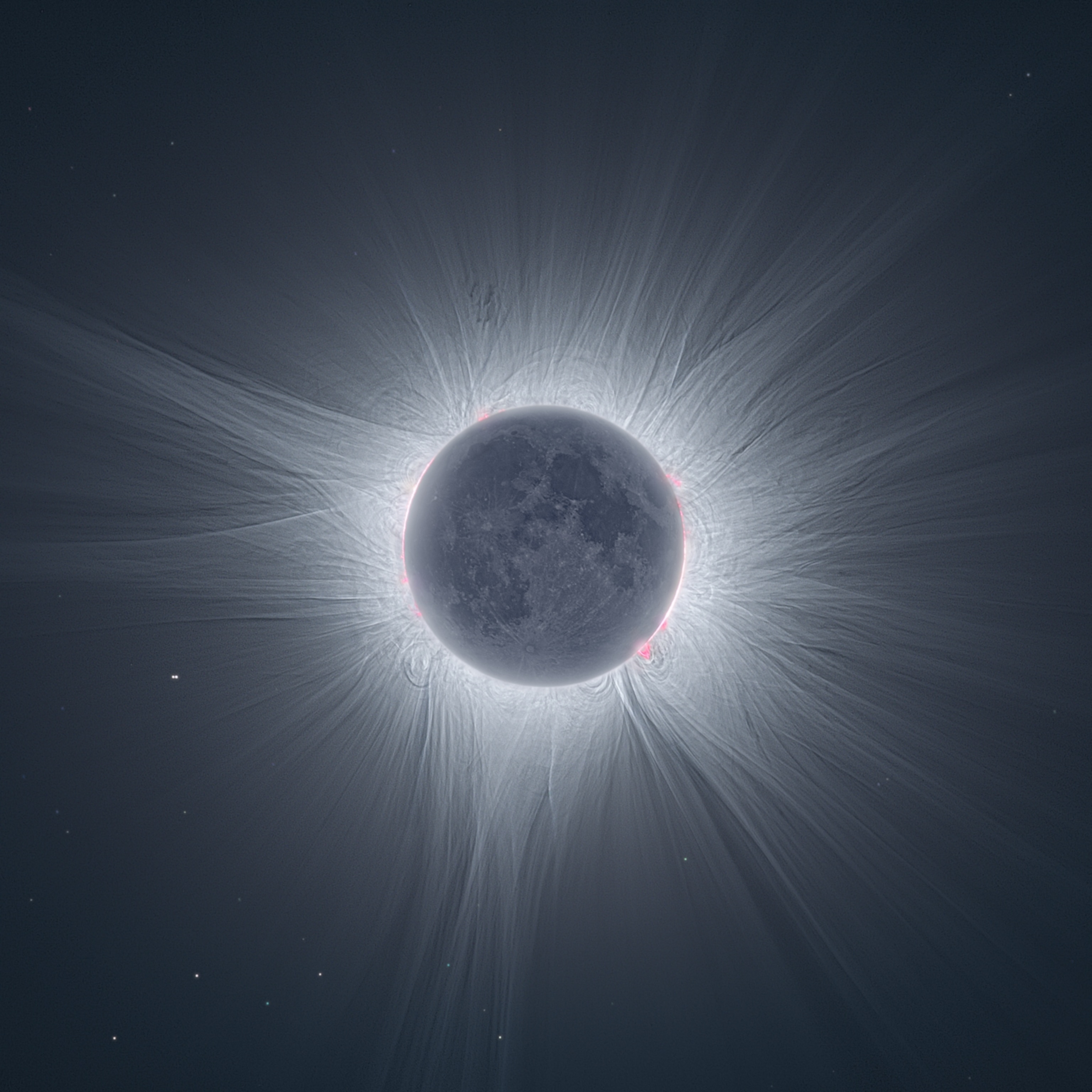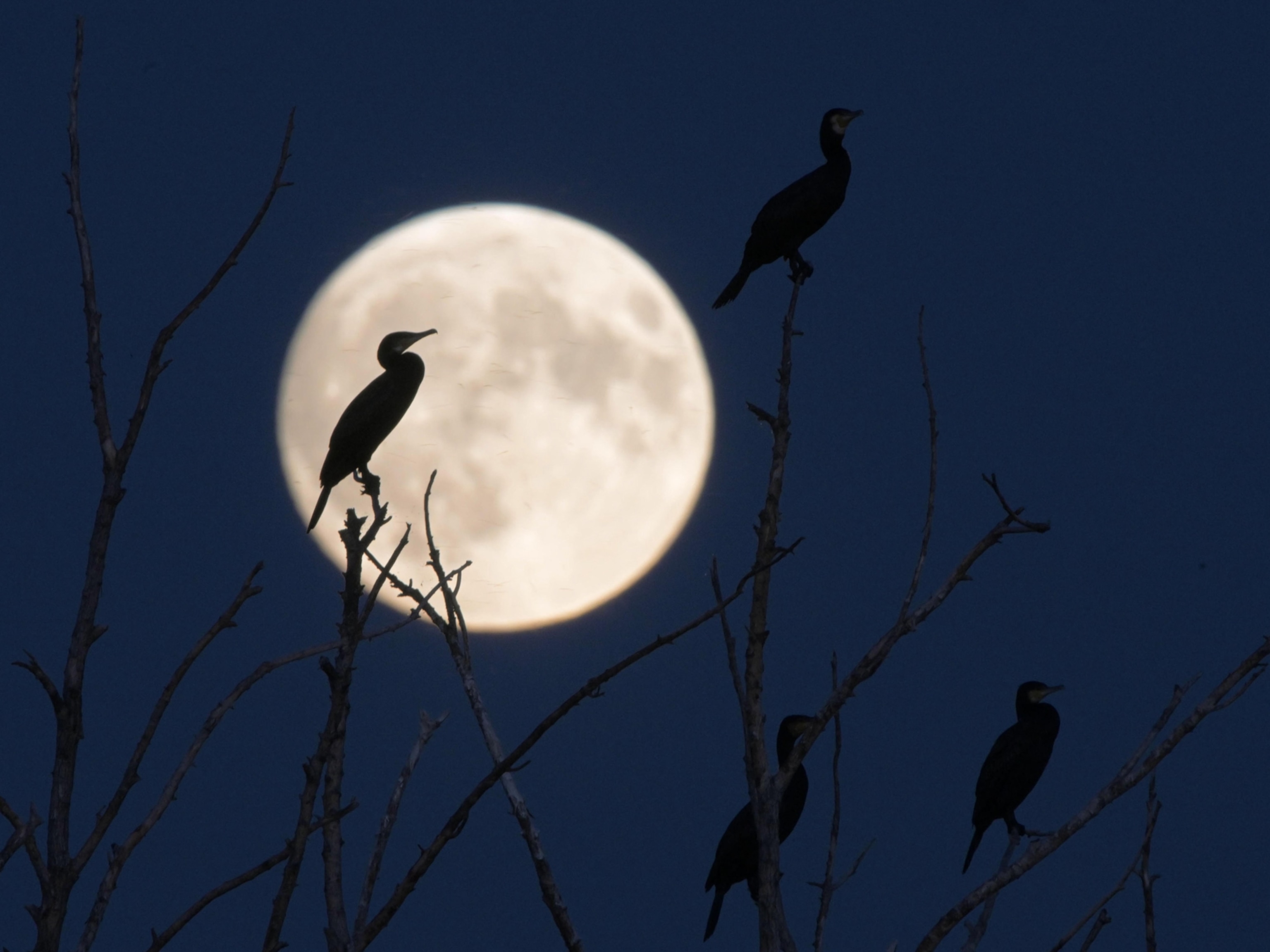
Saturn at its best, and more top stargazing events in July
A total solar eclipse and a lunar eclipse ahead of the Apollo 50-year anniversary will also entice sky-watchers to look up this month.
Stunning planet Saturn will dominate Earth’s skies this month, as it reaches its biggest and brightest showing for the year. Well positioned sky-watchers will also get a chance to see both a lunar and solar eclipse, while a sprinkle of shooting stars will whet the appetites of meteor hunters looking ahead to the Northern Hemisphere’s best summer sky show. Plus, the brilliant moon will be on everyone’s radar in the coming weeks, as the world prepares to celebrate the 50th anniversary of the Apollo 11 moon landing.
So mark your July calendar, and be sure to look up on the next clear night!
Total solar eclipse—July 2
The moon will briefly cover the entire disk of the sun for lucky observers along a narrow 125-mile-wide path stretching from the Pacific Ocean into northern Chile and central Argentina. Meanwhile, most of South America—including Brazil, Paraguay, Peru, and Uruguay—will witness an impressive partial solar eclipse, where the moon will seem to take a dark bite out of the sun.
The moon’s shadow will first touch down in the Pacific basin at 12:55 p.m. local time, and it will race across the continent in about five hours, with the final part of the show delivering a spectacular sunset eclipse on the east coast of Argentina, just south of Buenos Aires, at 5:51 p.m. One of the best viewing locations for totality, pending clear skies, should be La Serena, Chile, where totality will last for two minutes, 13 seconds starting at 4:39 p.m.
Moon and Regulus—July 5
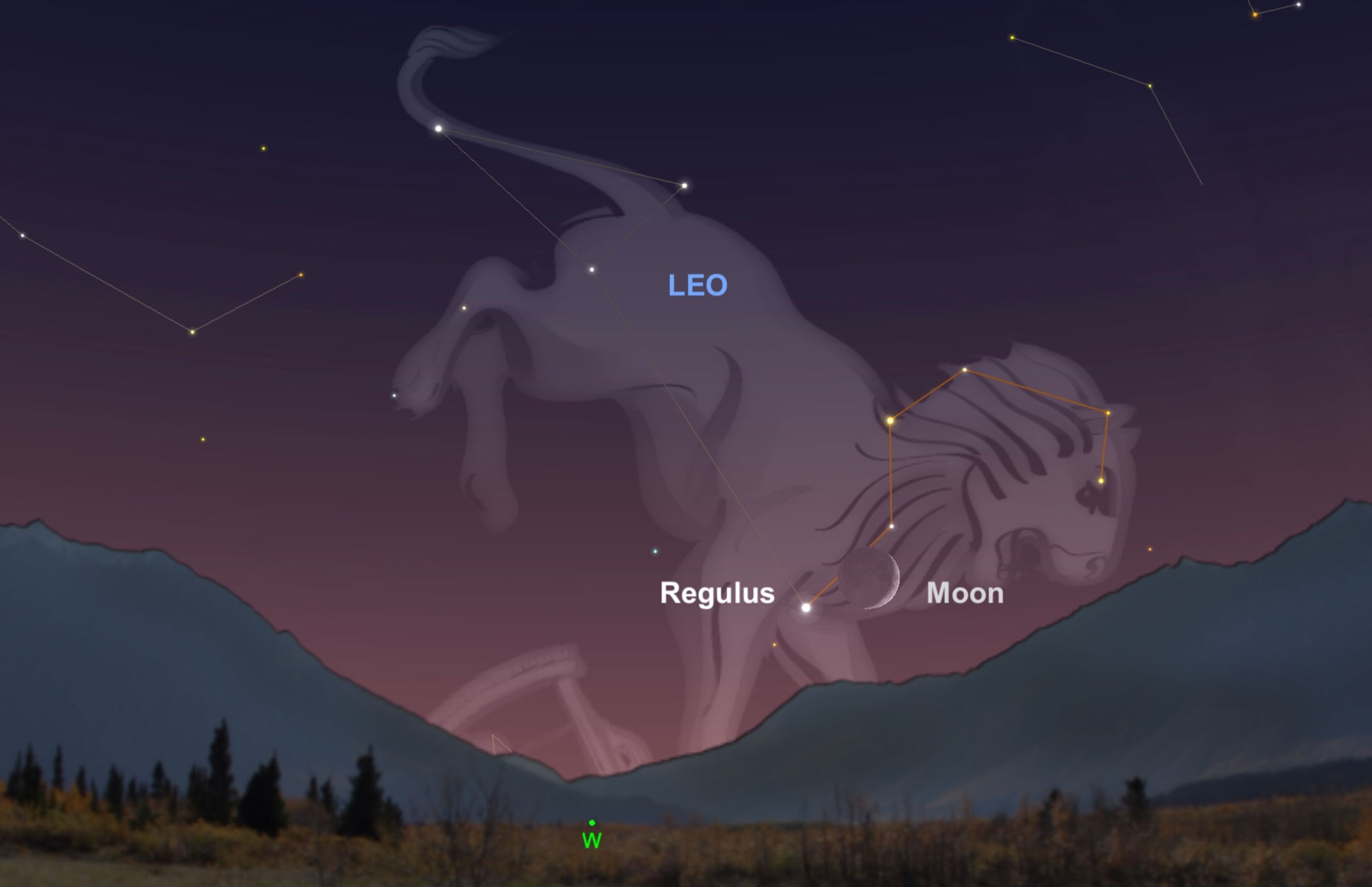
As a great observing challenge, look for the whisker-thin waxing crescent moon hanging low in the southwest sky on the evening of the 5th, about 30 to 60 minutes after your local sunset. Scan the sky to the moon’s left to see if you can catch sight of the bright star Regulus, the lead member in the springtime constellation Leo, the lion. The cosmic pair will be embedded in the glow of the sunset, so the star may be easier to spot with binoculars.
Saturn at opposition—July 9

The ringed planet reaches opposition on the 9th, marking the time when the planet is directly opposite to the sun from Earth’s perspective. That means Saturn will be especially bright, because it will be in full sunlight while also being its closest to Earth for 2019, making this an ideal time to take a gander at the mighty planet.
During opposition, Saturn rises in the east at sunset and sets in the west at sunrise. At midnight, you will find it due south. The planet will be shining like a brilliant, creamy colored star in the zodiacal constellation Sagittarius in the low southeast on late evenings. On the 15th, gaze toward the southeast as the near full moon poses with still-bright Saturn. The pair will be about half a degree apart, a separation that is less than the width of the lunar disk.
If you are able, also be sure to spy on Saturn with a backyard telescope or at a local observatory during opposition, as the rings will seem to surge in brightness thanks to sunlight directly backscattering through their countless chunks of ice particles.
Moon and Spica—July 9
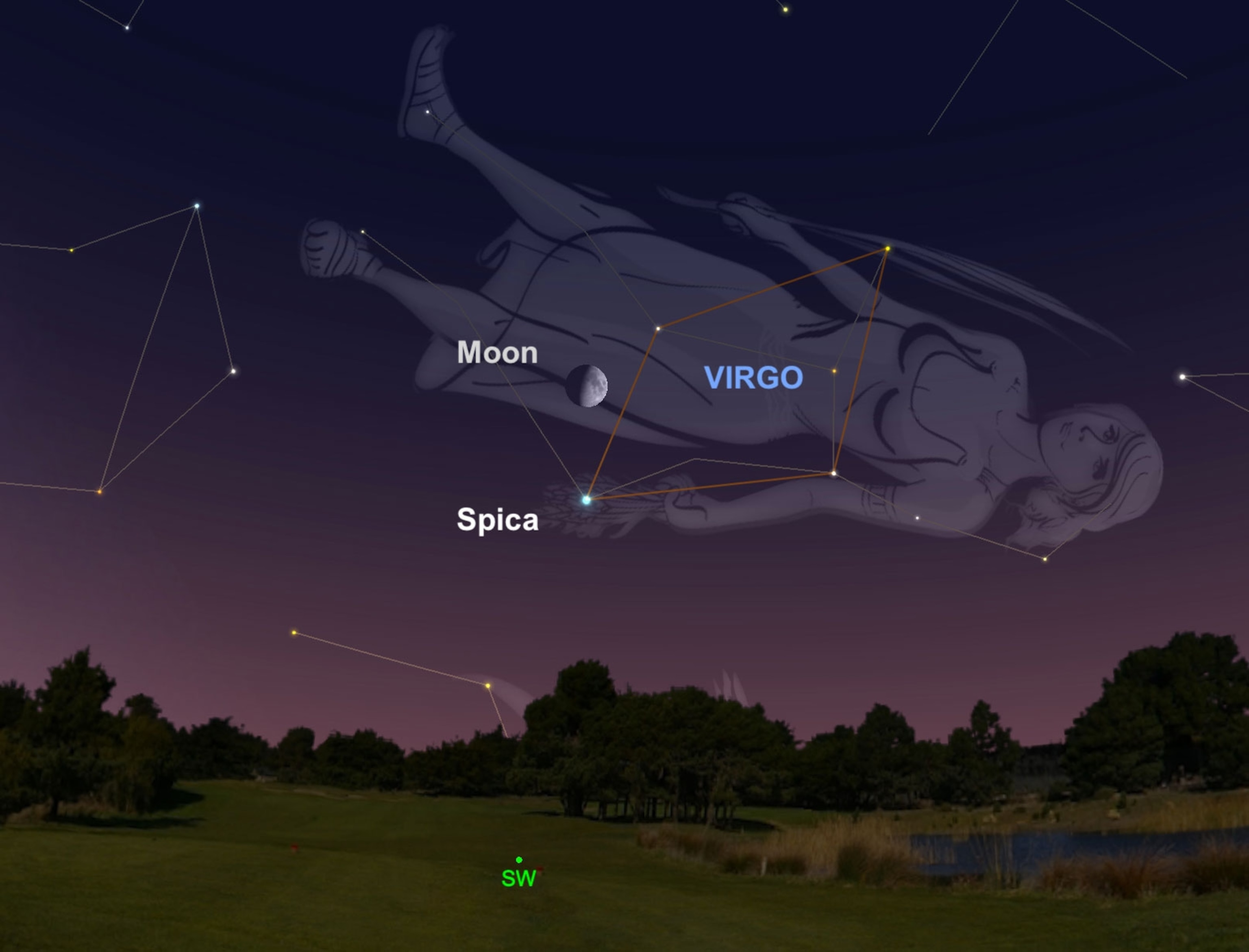
After darkness falls on the 9th, look for the waxing gibbous moon to be hanging out with the bright blue star Spica in the southwest sky. Spica is the lead star in the constellation Virgo, the maiden, and is 250 light-years from Earth. Despite its formidable distance, it is still ranked as the 15th brightest star in the night sky because of its powerful intrinsic luminosity—2,300 times brighter than our sun.
Moon and Jupiter—July 13
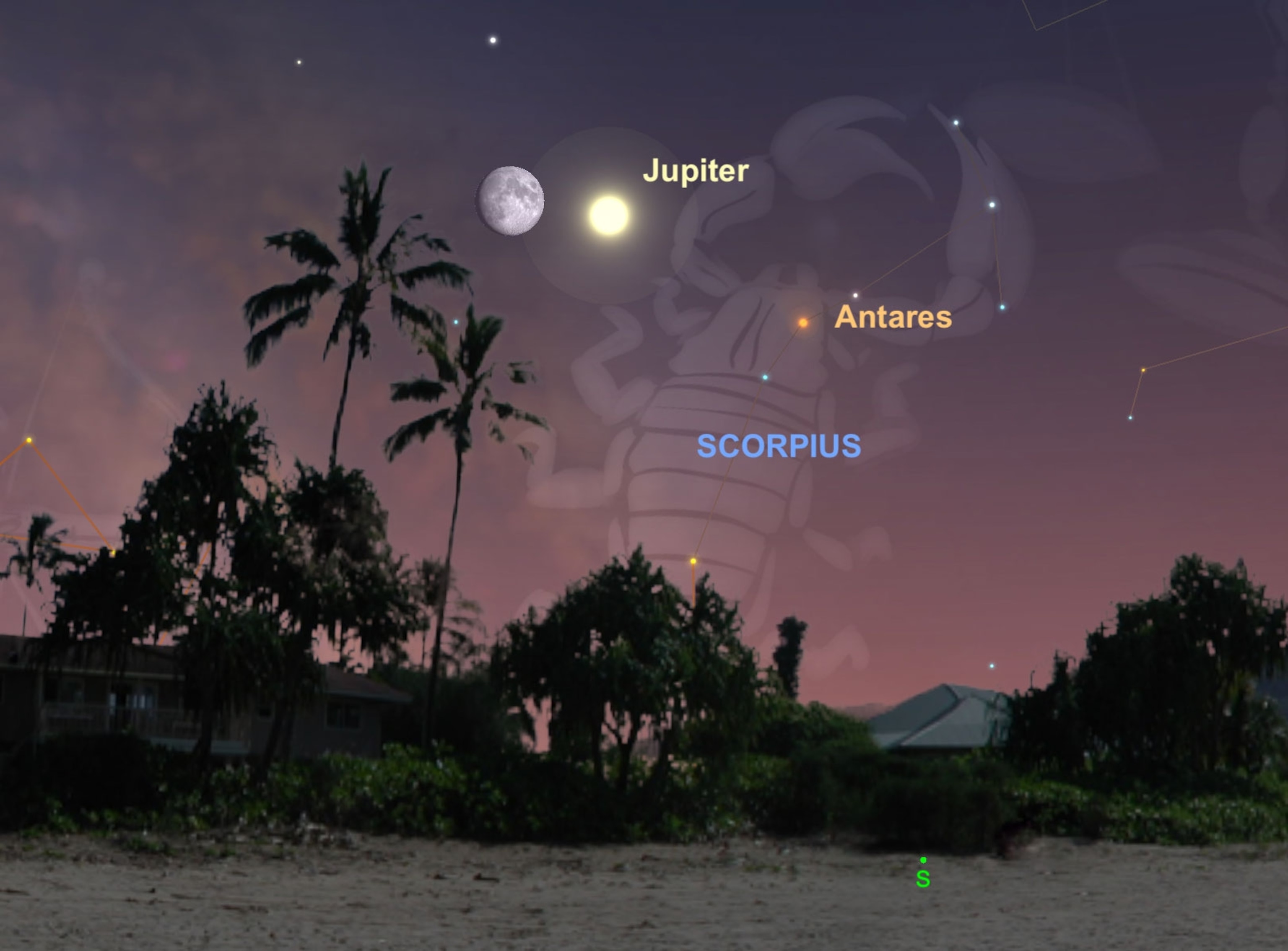
Late on the 13th, look for the waxing gibbous moon to be perched next to brilliant star-like Jupiter. The eye-catching pair will be next door to the heart of the scorpion, the orange star Antares in the constellation Scorpius.
Partial lunar eclipse—July 16-17
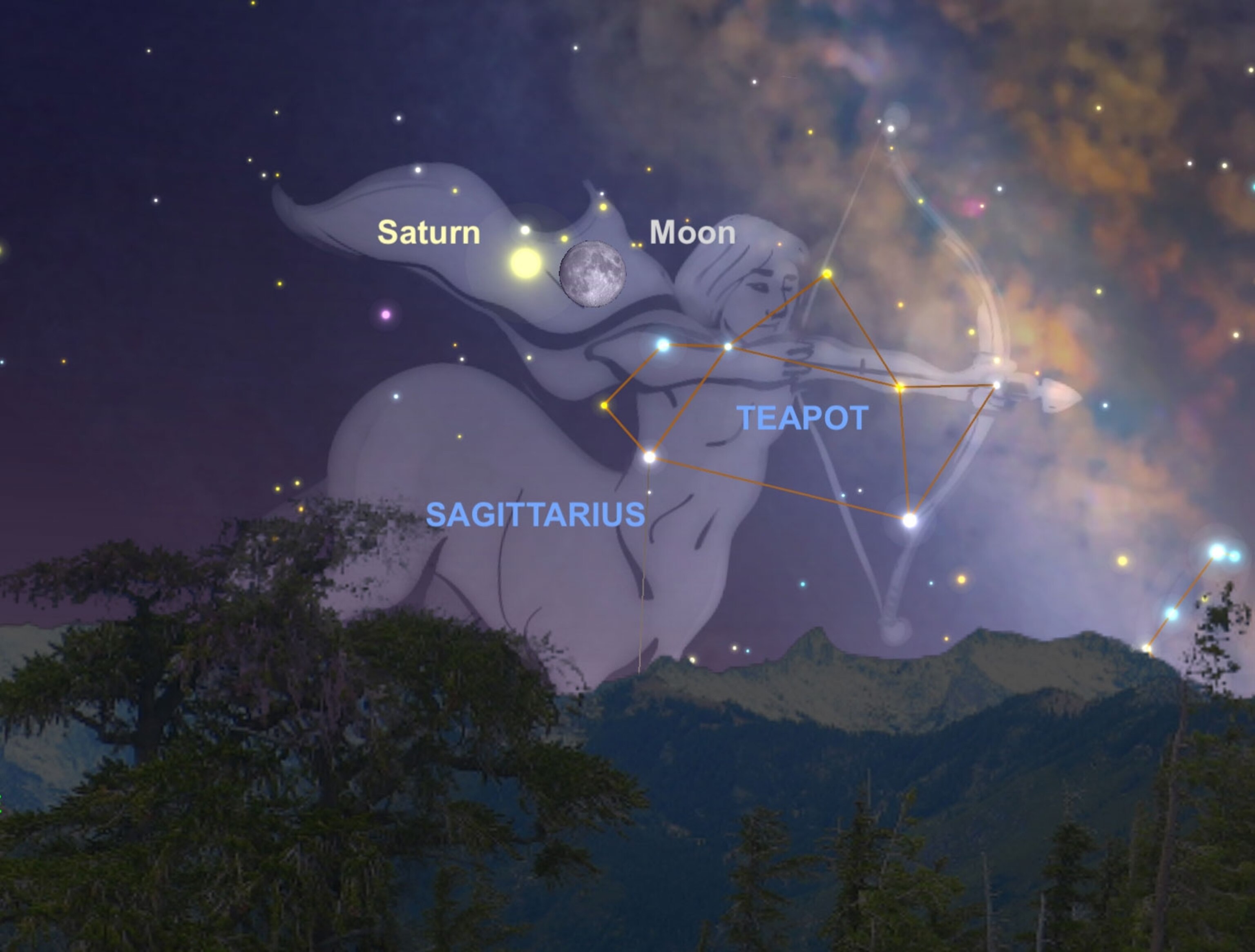
Sky-watchers across most of the Eastern Hemisphere, Europe, South America, and Africa will be treated to a partial eclipse of the moon on July 16 or 17, depending on the exact observing site. Observers in Europe and Africa will witness the lunar disappearing act on the night of July 16, while those in the Pacific Basin will see the eclipse on the morning of the 17th.
Earth's dark shadow will creep slowly over the bright lunar disk, as our planet moves between the sun and the moon. Unlike a total lunar eclipse, where the entire disk of the moon gets covered up, this partial eclipse will see about 65 percent of the moon covered during its maximum phase.
Apollo anniversary moon—July 20
Gaze at the waning gibbous moon rising in the east on July 20 and ponder the momentous achievement of the first human lunar landing 50 years ago, when the astronauts of the Apollo 11 mission took their first steps on its dusty, craggy surface.
Moon and Aldebaran—July 28
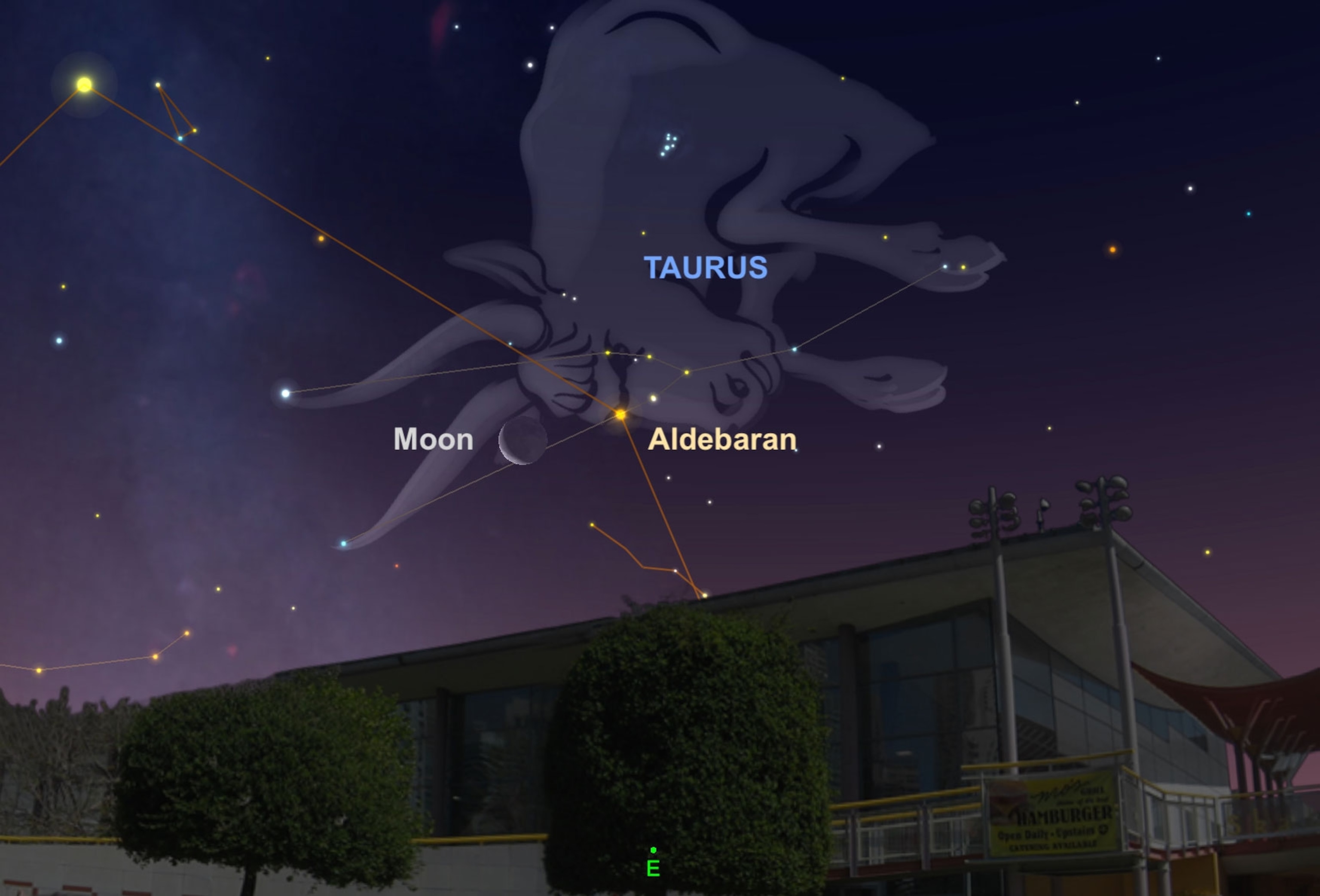
Early risers on the 28th will get a treat, as the waning crescent moon poses with the red eye of Taurus, the bull. The moon will appear to be only five degrees away from the star Aldebaran – a distinctly ruddy colored star that is actually 65 light-years away. Both cosmic objects will be hanging low in the southeast sky about an hour before local sunrise.
Delta Aquarids peak—July 28-30
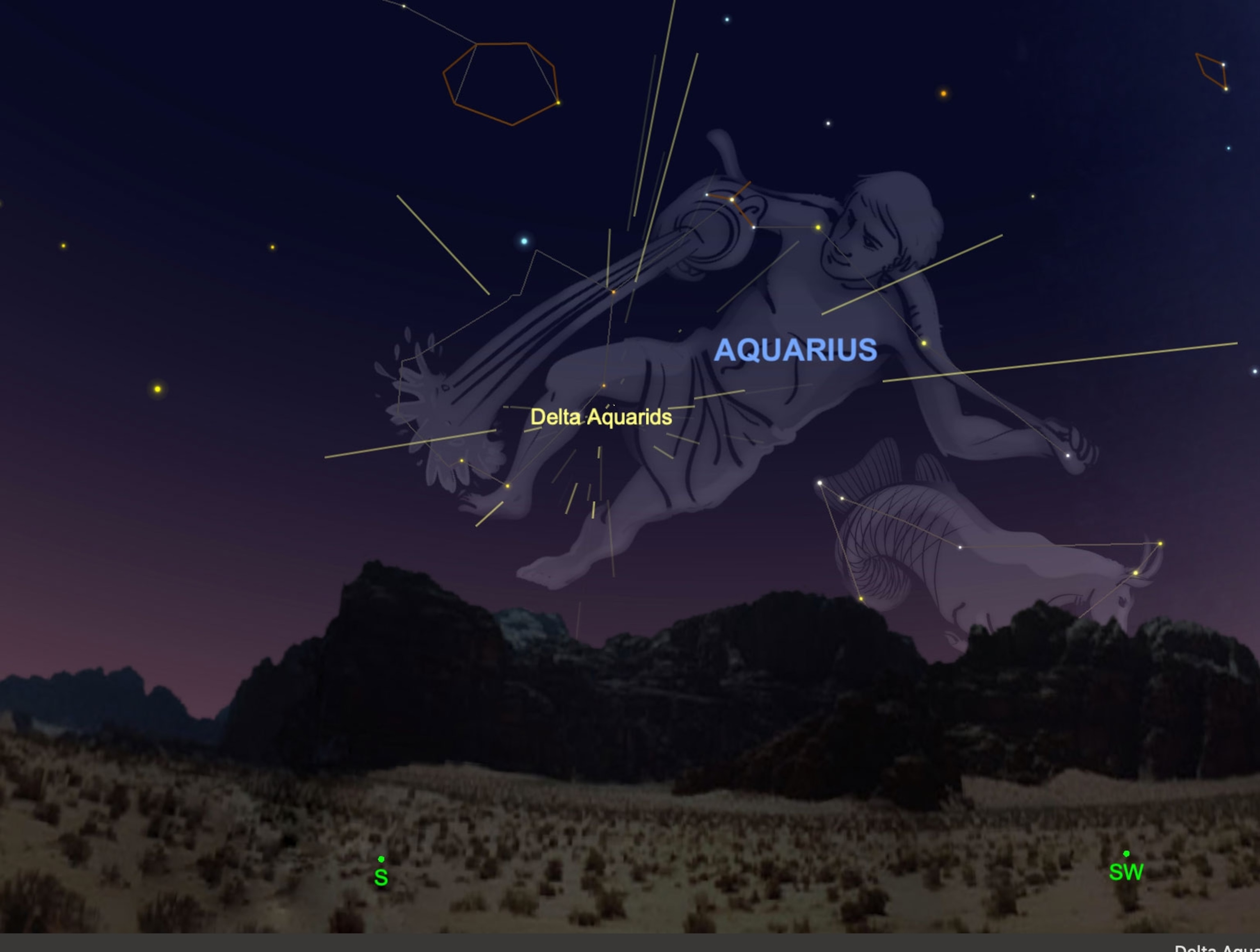
Starting late on the night of July 28 through July 30, watch for the peak of the Delta Aquarid annual meteor shower. Under dark skies away from light pollution, viewers should expect to see up to two dozen shooting stars an hour.
For those in the Northern Hemisphere, the individual meteors from this minor shower will appear to radiate from its namesake constellation Aquarius, the water bearer, in the low southern horizon. But the celestial show really favors viewers in the Southern Hemisphere, where the radiant point will be higher in the sky. The Southern Delta Aquarids run from July 12 to August 23, with broad peak activity that lasts for three nights.
And with the dark new moon arriving on the 31st, everyone should have ideal observing conditions this year.
Clear skies!



